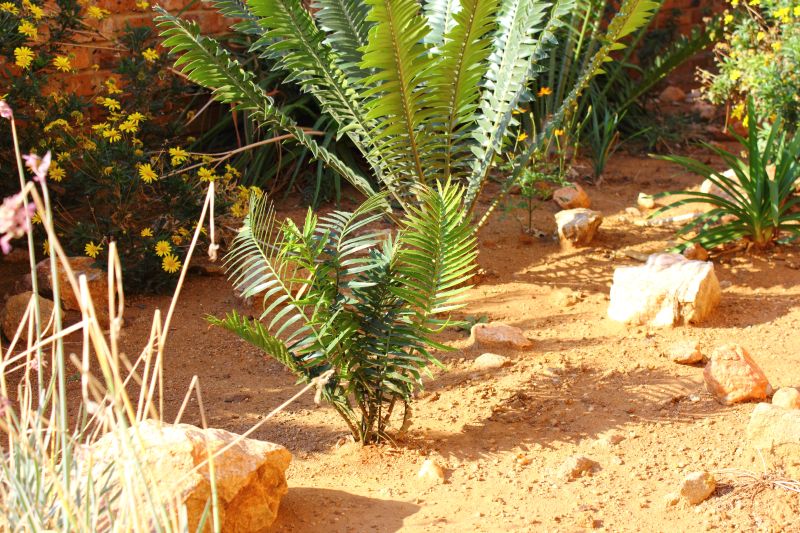Lisbeth wrote:I hope that you can soon open a cycad nursery


or start baking cycad bread

Some of the ways cycads were used in days gone by.
“The starch obtained from the stems of certain species is still used as food by some indigenous tribes. Tribal people also grind and soak the seeds to remove the nerve toxins that may be present, making the food source generally safe to eat, although often not all the toxin is removed. In addition, consumers of bush meat may face a health threat as the meat comes from game which may have eaten cycad seeds and carry traces of the toxin in body fat.
Cycad, known as sotetsu in Japanese, was traditionally a famine food in Okinawa - a last resort to turn to for sustenance during particularly difficult times. A period of particularly devastating poverty and famine in the 1920s, caused in large part by Japanese economic policies in the island prefecture, is known as "cycad hell" or sotetsu
Cycad meal known as Eenthu in Malayalam is a common food in Kerala. Traditionally, the seeds were sliced and kept in direct sunlight or near the hearth during rainy season to promote drying. The drying process is carried out to reduce the toxin levels and as a means of preservation. The outer shell is subsequently removed and inner portion is ground into a flour. Properly dried cycad seed flour may be stored for several years without deterioration.
Food items like Puttu, Eenthu kanji, Eenthu payasam etc. are made out of cycad seed power.These food items are particularly prepared in heavy rainy seasons in Kerala.”
Cycad leaves are used to decorate venues during festivals, marriages and other community celebrations.
In Vanuatu, where the cycad is known by the Bislama name namele, the tree has deep customary and spiritual significance. A single cycad leaf may be used as a taboo sign, while a pair of crossed cycad leaves is a peace sign and appears on the Vanuatu flag. The breaking off of fronds from a cycad leaf is used in traditional contexts as an aid to counting.






